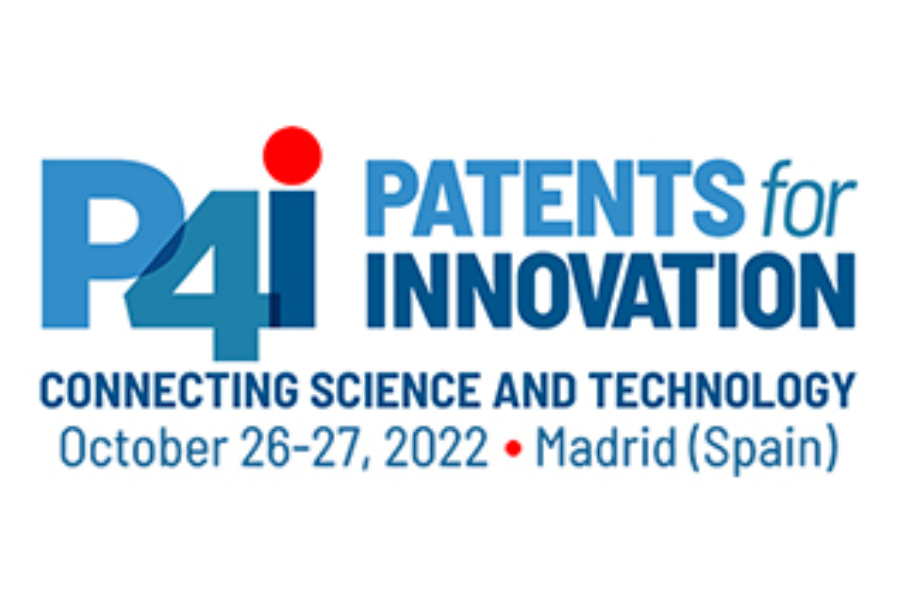IMDEA Energy patents and technologies at Patents for innovation International Summit & Expo
The most relevant patents and technologies outcome of the research work of IMDEA Energy will be presented at Patents for innovation, P4i,event that will be held in La Nave, Madrid, on October 26th and 27th, 2022. The patents and technologies that will be exhibited can be found here, the most relevant are the following:
- Advanced flow batteries (patents P201630327 Redox battery with immiscible electrolytes and PCT/EP2021/059865 Redox flow battery with immiscible electrolyte and flow throughelectrode). A flow battery is a type of battery that is recharged by means of two solutions contained within the system and separated by a membrane. The exchange of ions through the membrane provides the flow of electrical current, while the two liquids circulate in their respective spaces. Its main advantages are a much higher longevity than most conventional rechargeable batteries and the separation of electrolytes. We propose a redox flow battery based on, at least, one continuous flow electrode and immiscible electrolytes (ie liquid electrolytes insoluble with each other, which when in contact separate into two phases). The battery has the following advantages:
- Reduced operating and manufacturing cost compared to other redox batteries.
- Increased energy density.
- Greater robustness and durability.
- Capable of working in a dynamic state at high flow rates.
- Reduction of overpotentials.
- Nanostructured Conjugated Porous Polymers NanoCPP (patents P201730445 Conjugated Porous Polymers, materials comprising them, method of preparation and use thereof and EP22382566.2 Method for preparing conjugate porous polymers and uses thereof). Both Conjugate Porous Polymers, CPP, and Nanostructured Conjugated Porous Polymers, nanoCPP, can be used for a wide range of applications, including gas storage, catalysis and optoelectronics, due to their remarkable properties such as high micro- and mesoporosity, light harvesting, high conductivity, and great thermal, chemical and photostability. NanoCPP shows processable properties which are not available for CPP synthesized in bulk. The technology combines:
- The process to synthetize different nanoCPP with properties that combine high micro- and mesoporosity, and great thermal, chemical and photostability, as well as other properties that may be tailored such as light harvesting, conductivity, etc.
- The different materials, nanoCPP, with particular applications according to their chemical composition, structure and properties. In addition, nanoCPP can be processed in liquid phase applying them in thin layers or using plastic technologies such as extrusion, injection, etc.
- New materials to remove emerging contaminants and for electrolysers and fuel cells (patent P201931095 Metal-organic networks based on pyrene-phosphonate). We propose a patented metal-organic network, MOF, type material that is very stable, recyclable and has zero or low potential toxicity based on the pyrene-phosphonate ligand. The patent also protects the procedure for its synthesis. The material is useful for:
- Remove emerging contaminants from water. Contaminants can be removed by selective adsorption, photodegradation, or both in continuous or batch flow. Compared to classical adsorbent materials (carbons, zeolites, silicas) its advantages are: greater porosity, comparable stability, active centers to capture and degrade contaminants (some function as catalysts) and easy modification to achieve the desired properties.
- Electrolytes for proton exchange membrane fuel cells and electrolysers.
- Recyclable batteries (patent PCT/EP2021/073842 Recyclable Electrode Cell). We propose to apply an assembled battery concept with semi-solid injectable electrodes to facilitate the recycling of active materials and to reuse the inactive parts of the battery. In the injectable battery, the electrodes are not fixed in a current collector but are injected as a semi-solid material that enables the direct recovery of active materials through their expulsion from the cell. It allows to reuse all the passive components (current collectors, separators, casings,…) and the substitution of the electrode materials. When recycling, crushing is avoided and the following battery recycling stages are simplified. Advantages:
- Contribute to battery recycling, material recovery and the circular economy.
- Increase in the volume of metals recovered and in the economic profit.
- Compliance with new regulations.
- Simplification of recycling processes and reduction of their cost.
- GreenH2armony – Harmonised life-cycle indicators of hydrogen (Intellectual Property application number M-000336/2019 Computer Software “GreenH2armony” and Spanish Trade Mark 40005690). The goal of this software is to provide a sound database of life-cycle indicators for a wide range of hydrogen fuel options, which is intended to be used in robust comparative LCA studies. The tool –starting from carbon footprint, energy footprint and acidification values provided by the user and requesting straightforward information about the original study– computes the corresponding harmonised life-cycle indicators of hydrogen. Moreover, the tool automatically generates a report including not only the harmonised results but also their ranking within the current library of harmonised environmental indicators (which includes a large number of hydrogen options). It is a guided process that allows a very fast calculation of environmental indicators of hydrogen.
The Institute will be present at the stand of the Community of Madrid, where it will also exhibit a recyclable battery prototype and will participate in the B2B business roundtable.



